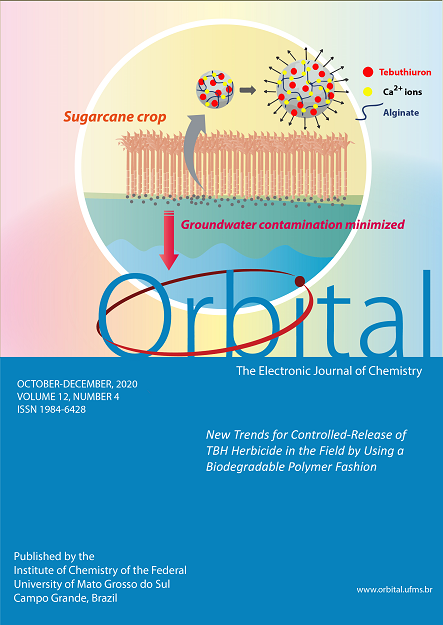The Theoretical Description for Magnesium Chlorate Electrochemical Determination on a Magnezone-XC Modified Electrode
- intoxication prevention,
- pesticide,
- magnesium chlorate,
- magnezone XC,
- electropolymerization
Copyright (c) 2020 Orbital: The Electronic Journal of Chemistry

This work is licensed under a Creative Commons Attribution-NonCommercial-NoDerivatives 4.0 International License.
Abstract
An interesting electroanalytical process for magnesium chlorate electrochemical determination has been described theoretically. The process involves the complex formation of magnesium cation with the azo dye Magnezone XC and the electropolymerization of the resulting complex compound in the presence of the chlorate-ion by two parallel mechanisms. The correspondent mathematical model has been developed and analyzed by means of linear stability theory and bifurcation analysis. It has been shown that from both electroanalytical and electrosynthetical points of view the system is efficient. The linear dependence between the electrochemical parameter and salt concentration is obtained easily, and the material formed during the electroanalytical process is highly conductive and catalytic. On the other hand, the oscillatory behavior in this system will be caused by double electric layer influences on both complexation and electropolymerization stages.

